Music production is an art, a technical craft, and a means of expression.
It’s the process of creating, arranging, recording, and refining music, and can help you transform a simple melody into a full-fledged composition.
That’s why we’re breaking down all the components and production steps needed to create show-stopping beats.
The goal is to equip you with the knowledge and skills required to navigate the music production landscape confidently and creatively.
In today’s article, we’ll cover:
- The music production process (from start to finish) ✓
- Selecting the right Digital Audio Workstation ✓
- Understanding sound and music fundamentals ✓
- Setting up a personal home studio ✓
- Exploring different music genres and styles ✓
- Mastering the pre-production phase ✓
- Techniques for recording & producing music ✓
- The intricacies of mixing and mastering ✓
- Sound design and audio engineering essentials ✓
- Strategies for effective music promotion ✓
- Navigating media formats and distribution ✓
By the end of this article, you’ll be well on your way to producing music with the finesse of a seasoned professional.
You’ll have insights into crafting intricate soundscapes, balancing technical proficiency with creative flair, and presenting your music to the world in the most compelling way.
Whether you aspire to produce chart-topping hits or just want to refine your musical creations, this guide will completely enhance your music production process.
So, let’s dive in…
Table of Contents
- What is Music Production?
- The Basics of Music Production
- Genres and Styles in Music Production
- The Music Production Process (Pre-Production)
- Producing and Recording Your Music
- Mixing and Mastering: Perfecting Your Sound
- The Art of Sound Design and Audio Engineering
- The Final Step: Promoting & Distributing Your Music
- Bonus: Incorporating Audio Effects
- Music Production: Final Thoughts
What is Music Production?
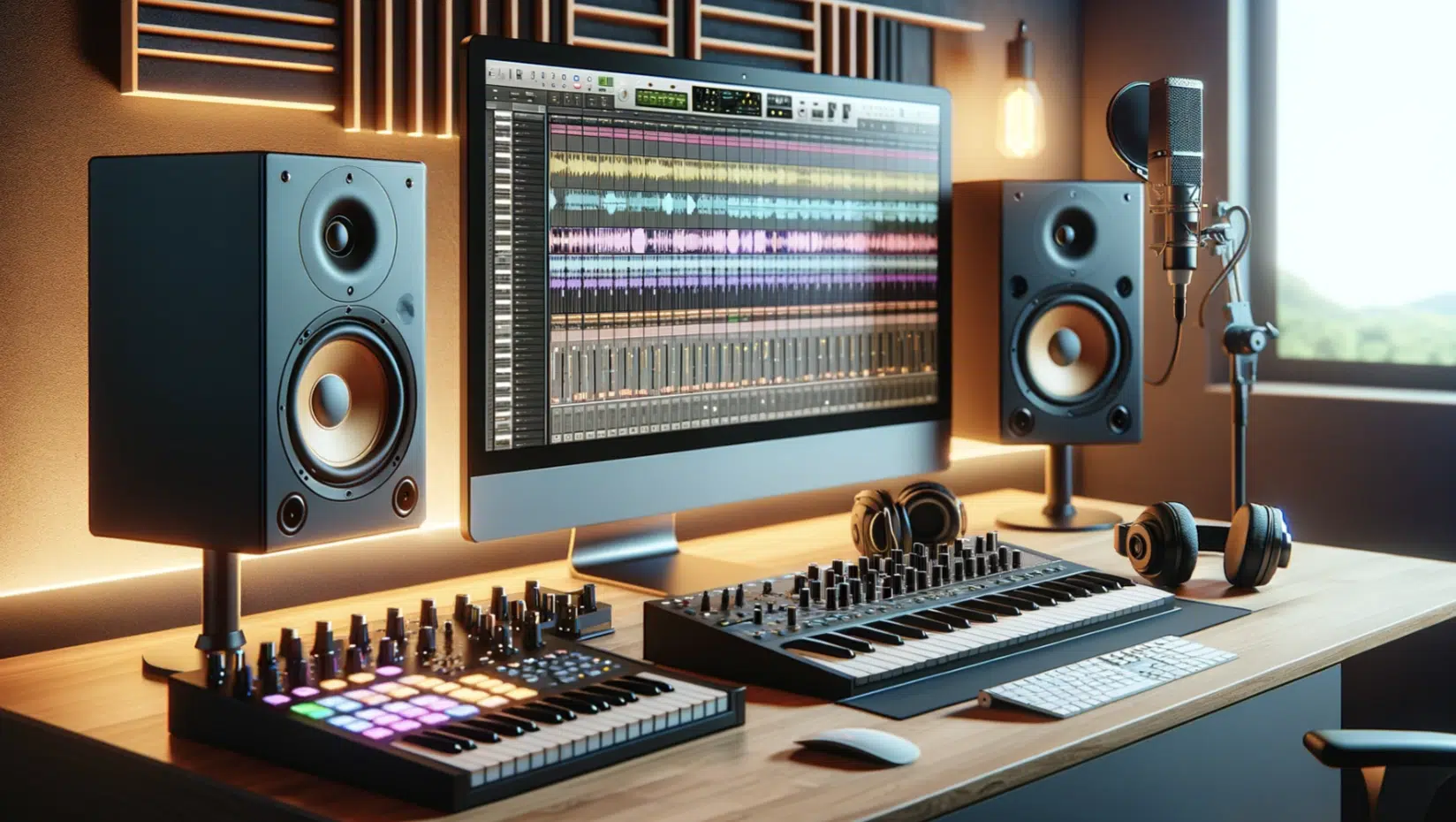
Music production is the process of creating legendary tracks.
It involves everything from the initial concept of a song to its final release.
At its core, music production encompasses:
- Composition
- Arrangement
- Recording
- Editing
- Incorporating effects
- Mixing and mastering
A music producer acts as the visionary, guiding this entire process to transform a musical idea into a polished final product.
They are responsible for making creative decisions, solving technical problems, and ensuring that the result aligns with the initial artistic vision.
This role requires a blend of musical talent, technical knowledge, and an understanding of the current trends in the music industry.
The music production process begins with writing music and lyrics 一 setting the foundation for what will become the final track.
This phase often involves using a Digital Audio Workstation (DAW) – a software platform where much of today’s music is crafted.
NOTE: Pro Tools and Logic Pro are popular examples, offering a range of tools for composing, recording, and editing music.
Your role as a music producer extends to managing the recording process and selecting the right music production equipment.
As well as employing various production techniques to shape the sound of the recording.
It requires leadership skills and determination.
As the process moves forward, music producers oversee mixing and mastering, ensuring the track sounds great on all playback systems.
In essence, music production is the art of bringing together various elements (harmonies, melodies, textures, and rhythms) to create a cohesive and engaging musical piece.
The Basics of Music Production
In digital music production, the journey begins with foundational elements. Understanding these basics sets the stage for creating impactful music. So, let’s jump right in.
-
Selecting Your First Digital Audio Workstation
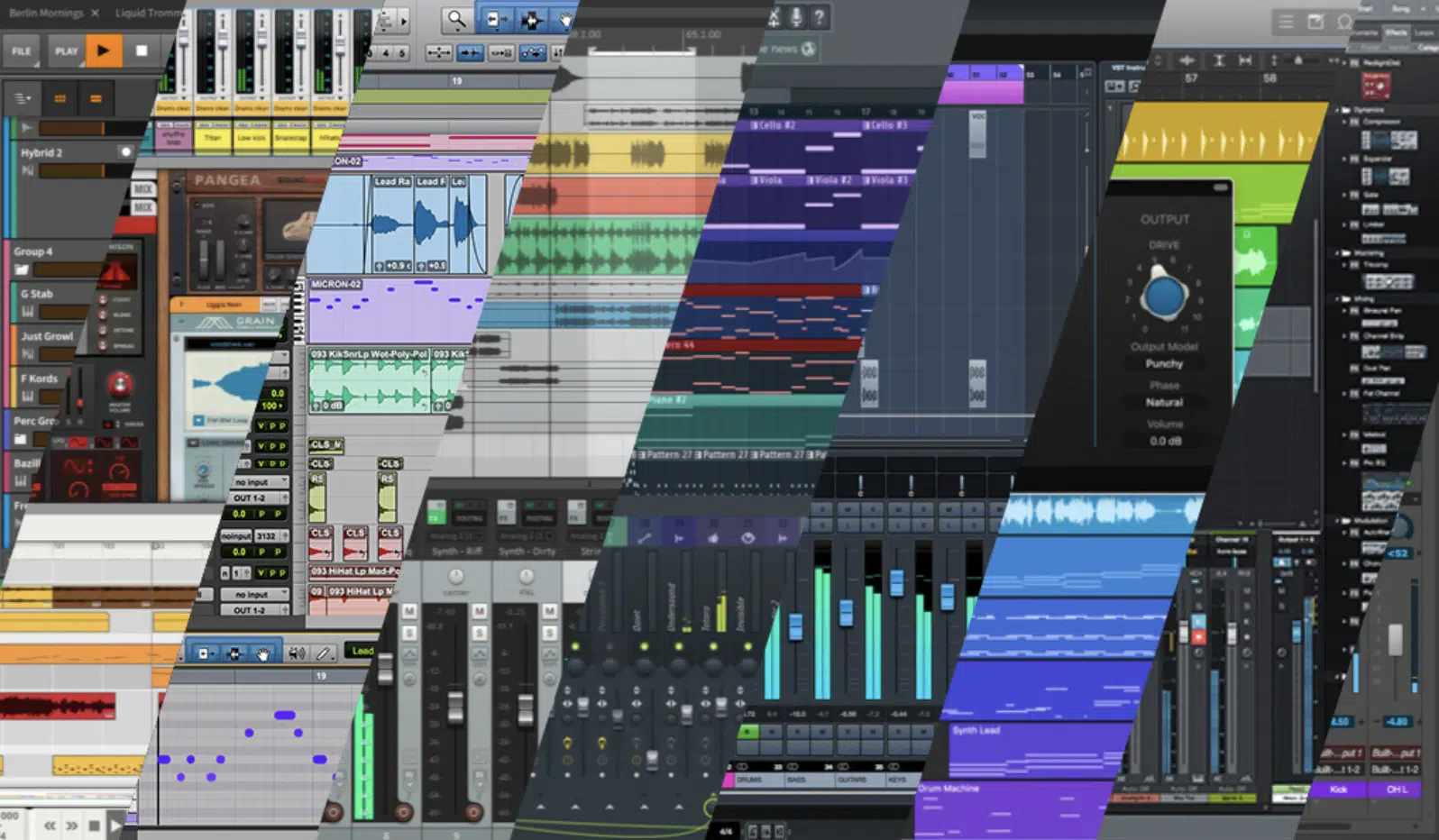
The heart of music production lies in selecting a Digital Audio Workstation (DAW).
For beginners, this choice can be pivotal in shaping their music production journey.
It’s not just about the capability of your music production software; it’s about how its interface and workflow align with your style.
Whether it’s Logic Pro for its user-friendly interface or Pro Tools for its industry-standard features, the key is to find a DAW that resonates with your creative process.
When choosing a DAW, consider factors like the:
- Range of virtual instruments
- Variety of mixing and mastering tools
- Compatibility with your operating system
Most music producers also value a DAW’s ability to handle various plugins and third-party tools, as these enhance the production experience.
Ultimately, it will depend on your personal preference and workflow.
-
Grasping the Fundamentals of Sound and Music

Before diving into producing music, it’s crucial to grasp the basics of sound and music theory.
This knowledge not only helps in making informed technical choices but also in creatively manipulating sound to craft unique audio experiences.
To become a more skilled producer, you’ll need to learn about things like:
- Waveforms
- Frequency ranges
- Chord progressions
- Etc.
A solid understanding of these concepts is a key step in becoming a skilled producer.
Music theory isn’t just for traditional composers 一 it’s a valuable tool for digital music producers.
It helps the producer write songs, develop melodies, and understand song structure.
Even a basic understanding of scales and harmony can elevate your music production process, leading to more cohesive and compelling musical pieces.
-
Creating Your Home Studio

Building a home studio is a thrilling step for any aspiring music producer.
It’s not about having the most expensive equipment but about choosing the right tools that suit your needs.
The following make up the backbone of a functional home studio:
- An audio interface
- A pair of studio monitors
- A MIDI controller
Remember, the quality of your music production equipment, regardless of your specific music genre (pop, trap, house, hip-hop, jazz, rock, etc.), can significantly affect the final sound of your music.
Beyond equipment, the environment of your home studio plays a crucial role.
When you record music, processes like acoustics, soundproofing, and ergonomic setup contribute to a productive space.
A well-designed home studio not only enhances the recording process but also makes long production sessions comfortable and enjoyable.
Genres and Styles in Music Production
Transitioning into the world of music genres and styles, we explore the diversity and creativity that music production offers. Let’s break down different genres and styles, for optimum results and creativity.
-
Exploring Various Music Genres
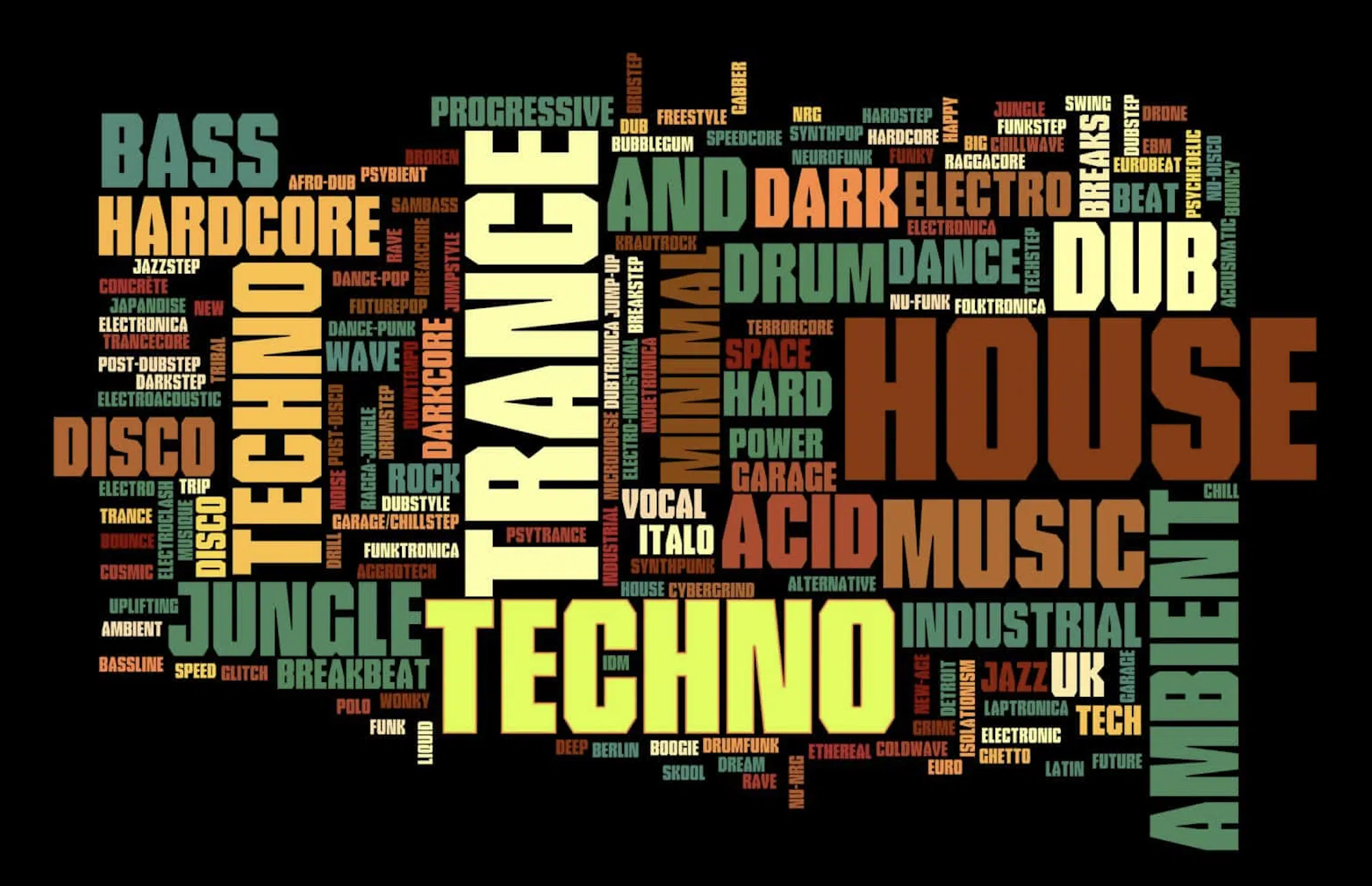
Understanding each music genre is crucial for any music producer.
Each genre, from hip-hop to electronic, has its unique:
- Characteristics
- Rhythms
- Instrumentation
By exploring not just one specific genre, but various genres, you expand your musical palette and gain insights that can be applied to your music production process.
Don’t hesitate to experiment with different genres.
This exploration can lead to innovative musical ideas and help you find your niche in the music industry.
Many successful music producers often blend elements from multiple genres 一 creating unique sounds that define their style.
-
Developing Your Unique Sound
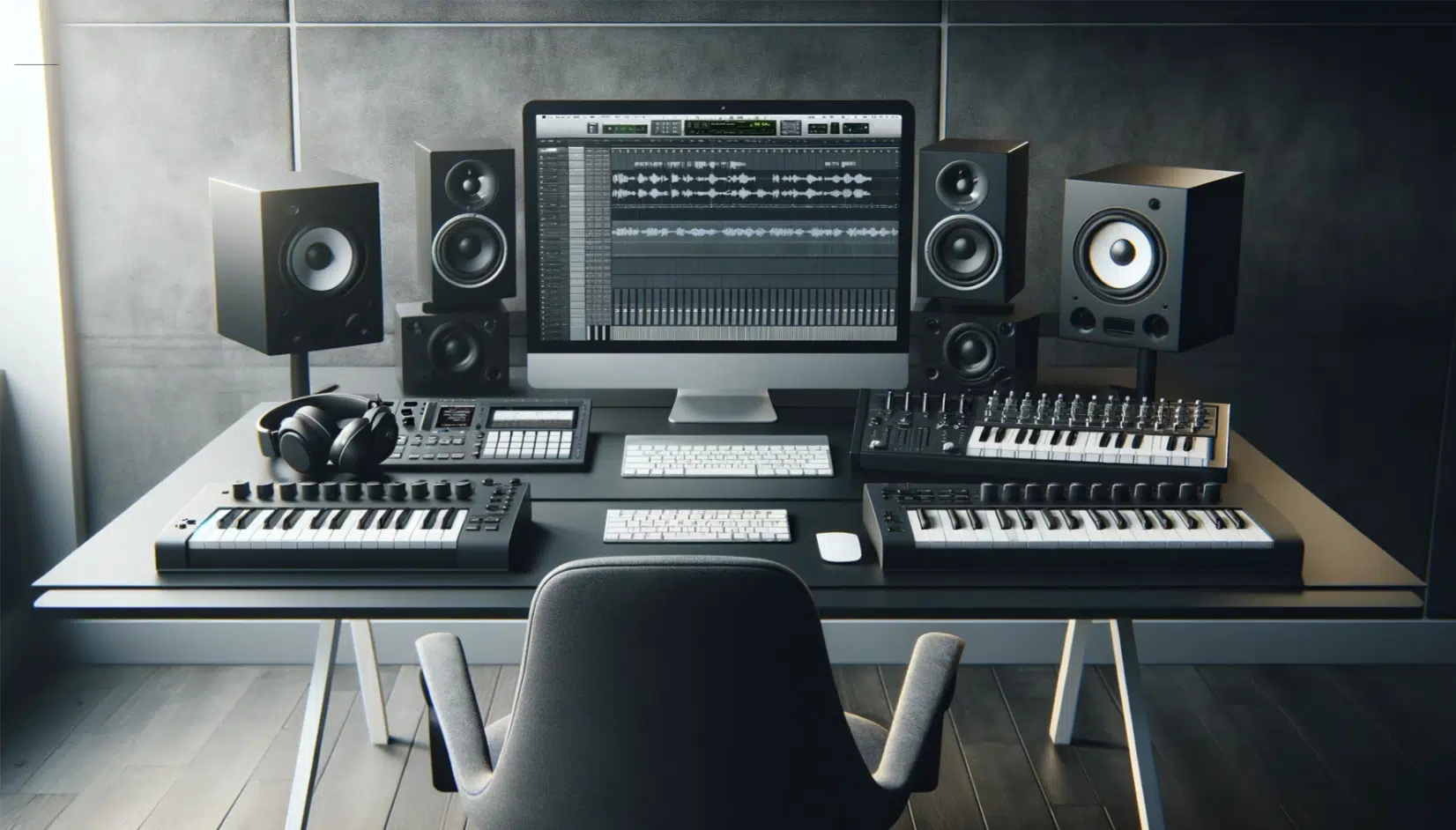
When you produce music, developing a unique sound is crucial to standing out.
It involves experimenting with various:
- Instruments
- Production techniques
- Musical influences
Your unique sound sets you apart and makes your music recognizable.
While it’s important to have a signature sound, it’s equally important to evolve and innovate.
The music production process should be a balance between maintaining your distinctive style and experimenting with new ideas and technologies.
This approach keeps your music fresh and engaging.
The Music Production Process (Pre-Production)
The pre-production stage is a critical phase in music production, setting the foundation for what’s to come. So, let’s break it down.
-
Planning Your Music Production Process

Every successful music production process begins with thorough planning.
This stage involves brainstorming ideas, defining the scope of your project, and setting clear goals.
Whether you’re producing music for an album, EP, or a single track, having a plan gives you direction and focus.
When you produce music, consider what you want to express through your music.
Think about the elements that will shape your music, like the overall:
- Mood/vibe
- Tempo
- Instrumentation
This is where your creativity as a music producer begins to take shape.
Once your concept is clear, start organizing your ideas.
This might include deciding on song structure, key musical themes, and any specific production techniques you want to use.
Effective planning in this stage can make the rest of the music production process smoother and more cohesive.
Whether it’s your first song or your hundredth, planning your music production steps is vital.
-
The Art of Writing Music and Lyrics
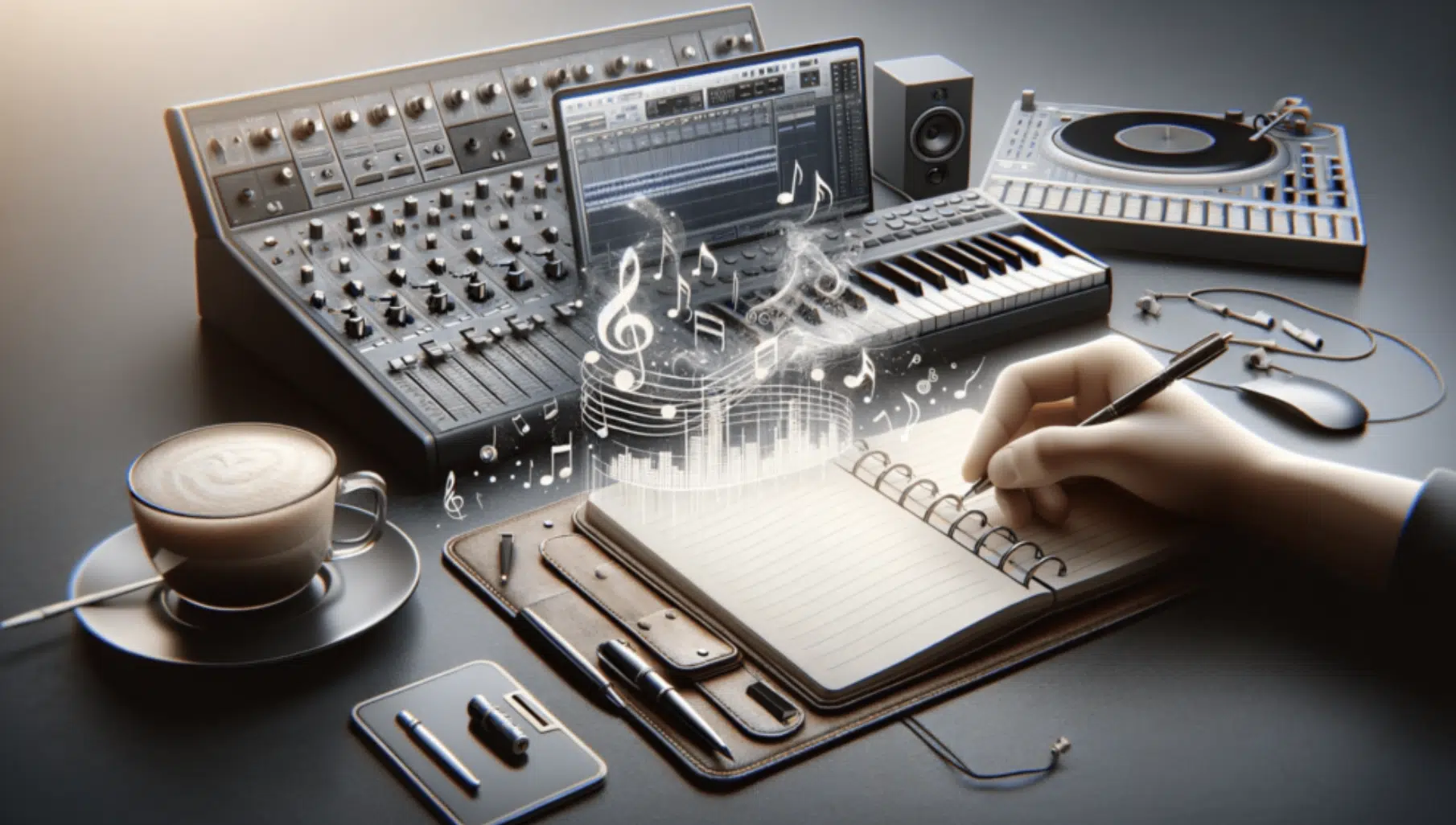
Writing music is an art that requires both creativity and technical skill.
When you write music, start by laying down a basic melody or chord progression, then build around it 一 using your DAW to experiment with different sounds and rhythms.
Remember, this stage is about exploration and finding what works best for the song.
If your project includes vocals, writing lyrics is a crucial part of the process.
Lyrics should complement the music and contribute to the overall message or story of the song.
Whether you’re writing personal narratives or abstract concepts, ensure that your lyrics are meaningful and resonate with the listener.
-
Gearing Up for the Recording Process
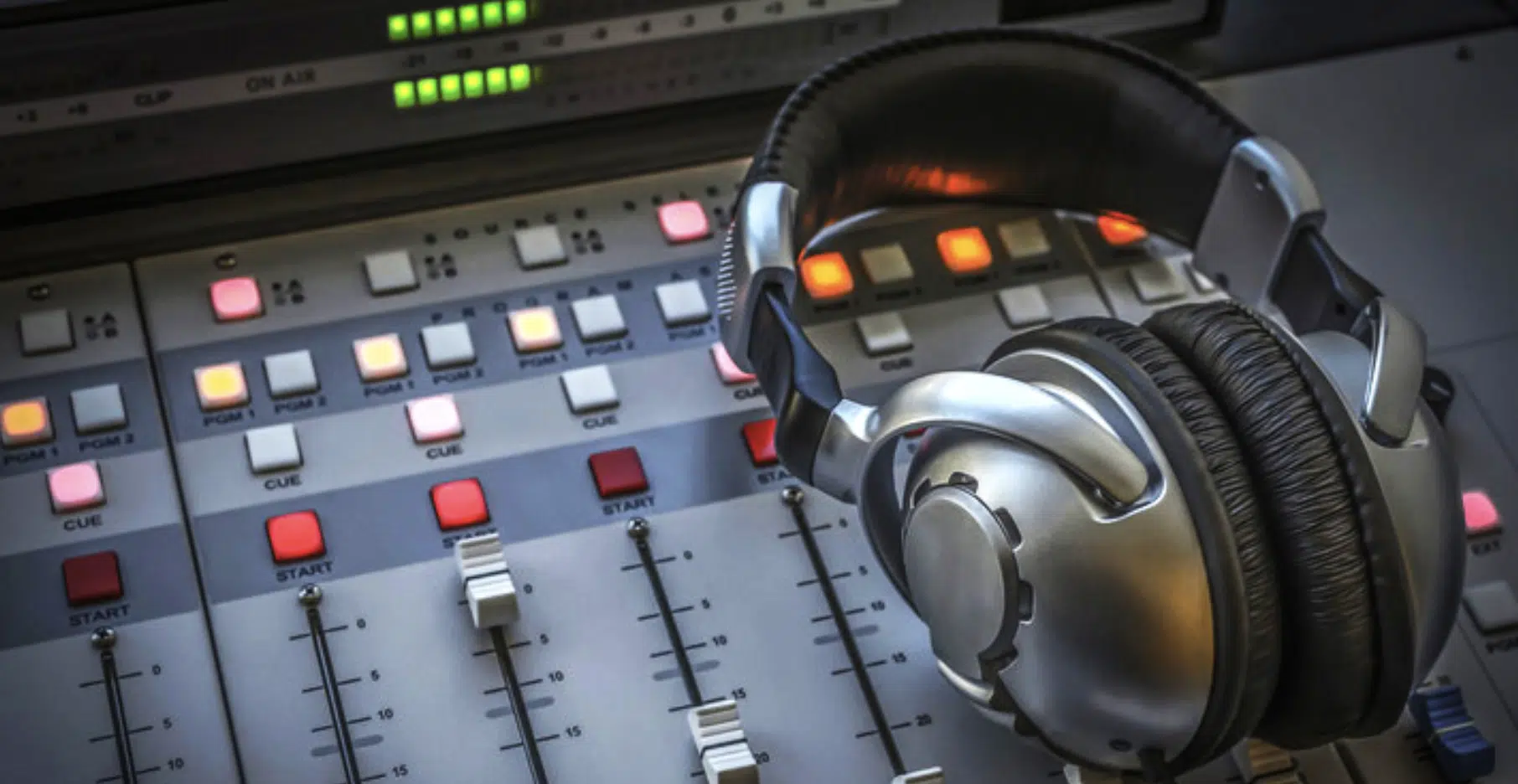
Before you start the actual recording session, make sure everything is in place.
That way, you can record music efficiently and professionally.
This requires:
- Checking the equipment needed
- Setting up your recording space
- Ensuring your instruments are ready (if applicable)
A smooth recording process is often the result of meticulous preparation.
When you begin recording, take it one step at a time.
Focus on laying down the foundational elements first, like the rhythm section or the main melody.
Use your DAW effectively to capture the best performances, and don’t hesitate to record multiple takes (like a record producer).
When it comes to recorded music, the goal is to have a solid base to build upon in the later stages of production.
If you’re working with other musicians or vocalists, clear communication is key.
Collaboration can bring a new dimension to your music and help you record music more efficiently.
Also, be flexible and ready to make adjustments during the recording process.
Sometimes, the best musical moments of a recording project come from spontaneous changes.
Producing and Recording Your Music
With a solid pre-production plan in place, we move into the heart of the music production process: recording and producing your music. This technical aspect is key to creating professional-sounding tracks and enhancing your music production process.
-
The Ins and Outs of the Recording Session

A successful recording session starts with the right environment, so make sure to ensure your music studio is set up for optimal recording quality.
This involves managing acoustics, setting appropriate levels on your audio interface, and creating a comfortable atmosphere for everyone involved.
Utilize various recording techniques to capture the essence of your music.
Whether you’re recording live instruments or using digital sounds, focus on achieving the best possible audio quality.
To get the desired outcome:
- Experiment with microphone placements
- Use soundproofing effectively
- Manage your DAW’s recording settings
Recording can be unpredictable, and challenges are part of the process.
Whether it’s technical issues or creative blocks causing issues, stay patient and adaptable.
Sometimes, taking a break or trying a different approach can lead to breakthroughs.
-
Embracing Technology: Virtual Instruments and MIDI
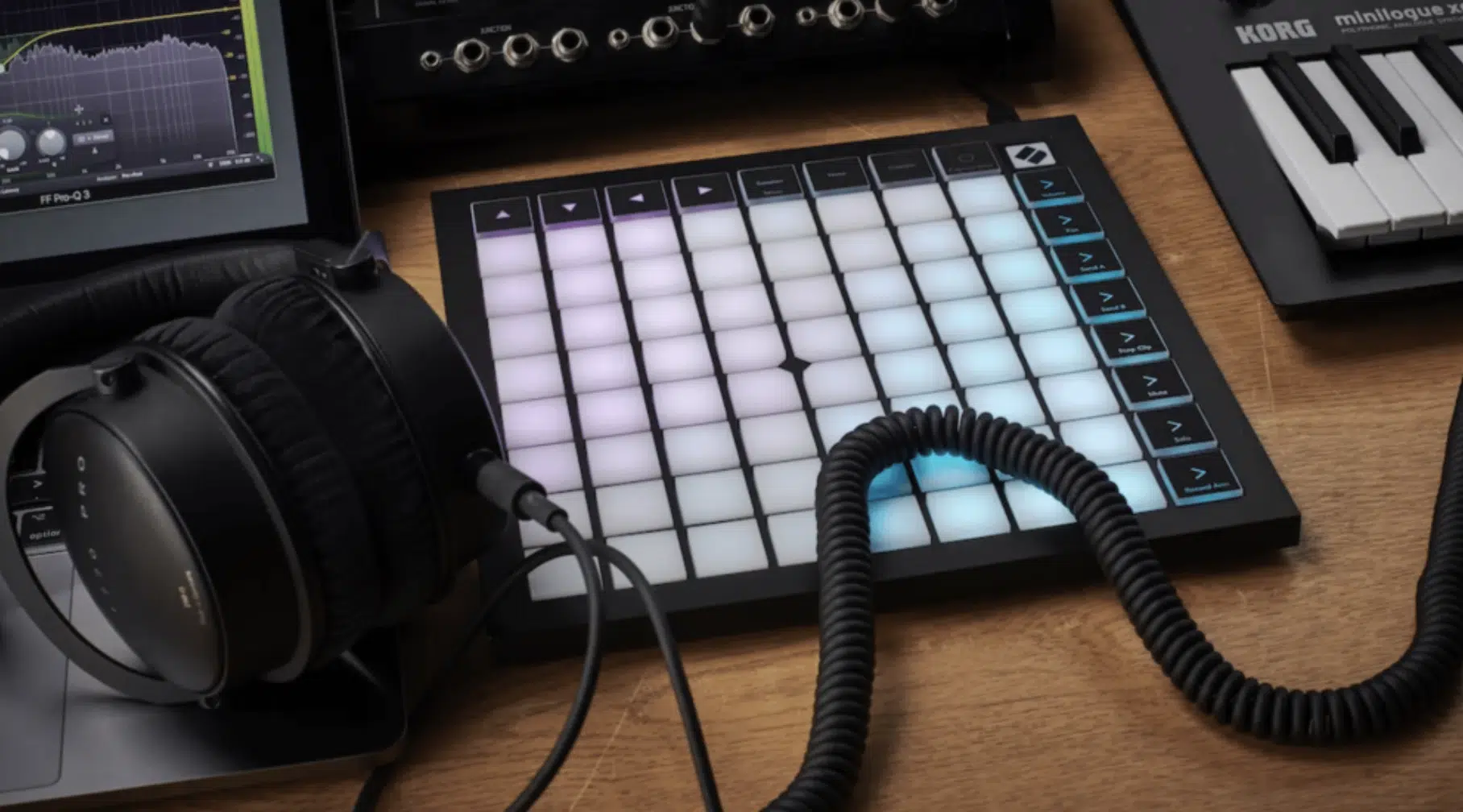
In digital music production, virtual instruments offer endless creative possibilities.
They allow you to incorporate a wide range of sounds 一 from realistic simulations of acoustic instruments to entirely new, synthesized tones.
Explore various virtual instrument libraries to find the ones that suit your music style.
MIDI (Musical Instrument Digital Interface) is a powerful production tool.
It allows for precise control over virtual instruments, enabling complex compositions that might be difficult to achieve otherwise.
Learn to use MIDI effectively to sequence and manipulate your musical ideas.
Most digital audio workstations offer sufficient MIDI capabilities.
Use these to your advantage by:
- Programming intricate drum patterns
- Creating layered melodies
- Automating changes in your music
Understanding how to integrate MIDI with your DAW can significantly enhance your audio production process.
Plus, opens you up to creative possibilities and experiences.
-
Achieving the Perfect Take in Your Recording
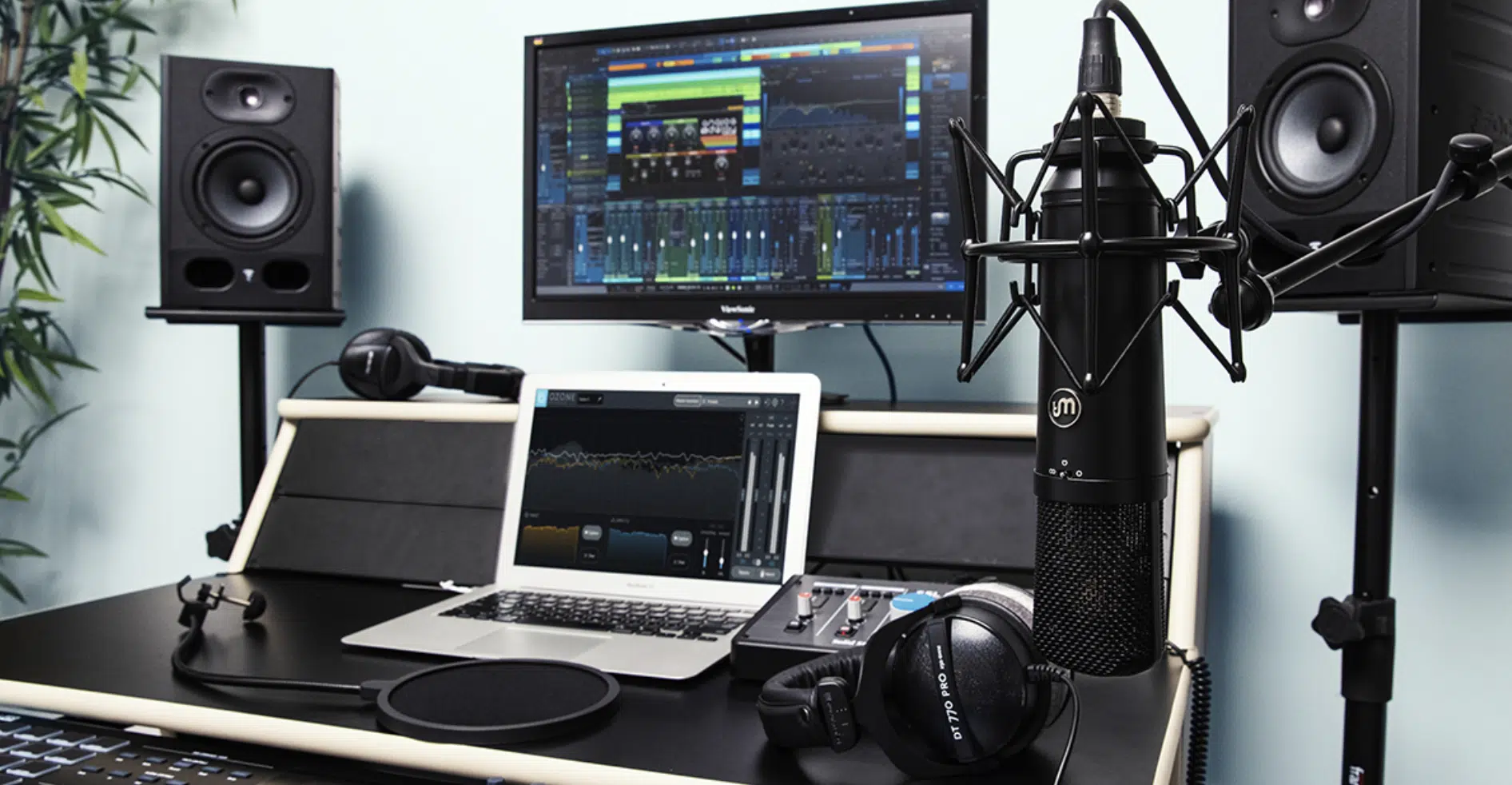
The quality of a recording is heavily influenced by the performance itself.
Whether you’re recording yourself or working with other musicians, aim for emotional authenticity and technical precision.
Sometimes, the perfect take is not about flawlessness but about capturing the right feel and energy.
After recording, take the time to review your takes carefully.
Make sure to analyze:
- Nuances in performance
- Sound quality
- How each take fits within the context of the entire song
Selecting the right take can make a significant difference in the overall impact of your song and make or break your track.
This selection process is crucial in ensuring that the final product reflects your vision and the essence of the music.
Mixing and Mastering: Perfecting Your Sound
After recording, we enter the critical phases of mixing and mastering 一 which can transform a good track into a unforgettable one. As a music producer, you must be very familiar with each unique process.
-
The Intricacies of Mixing
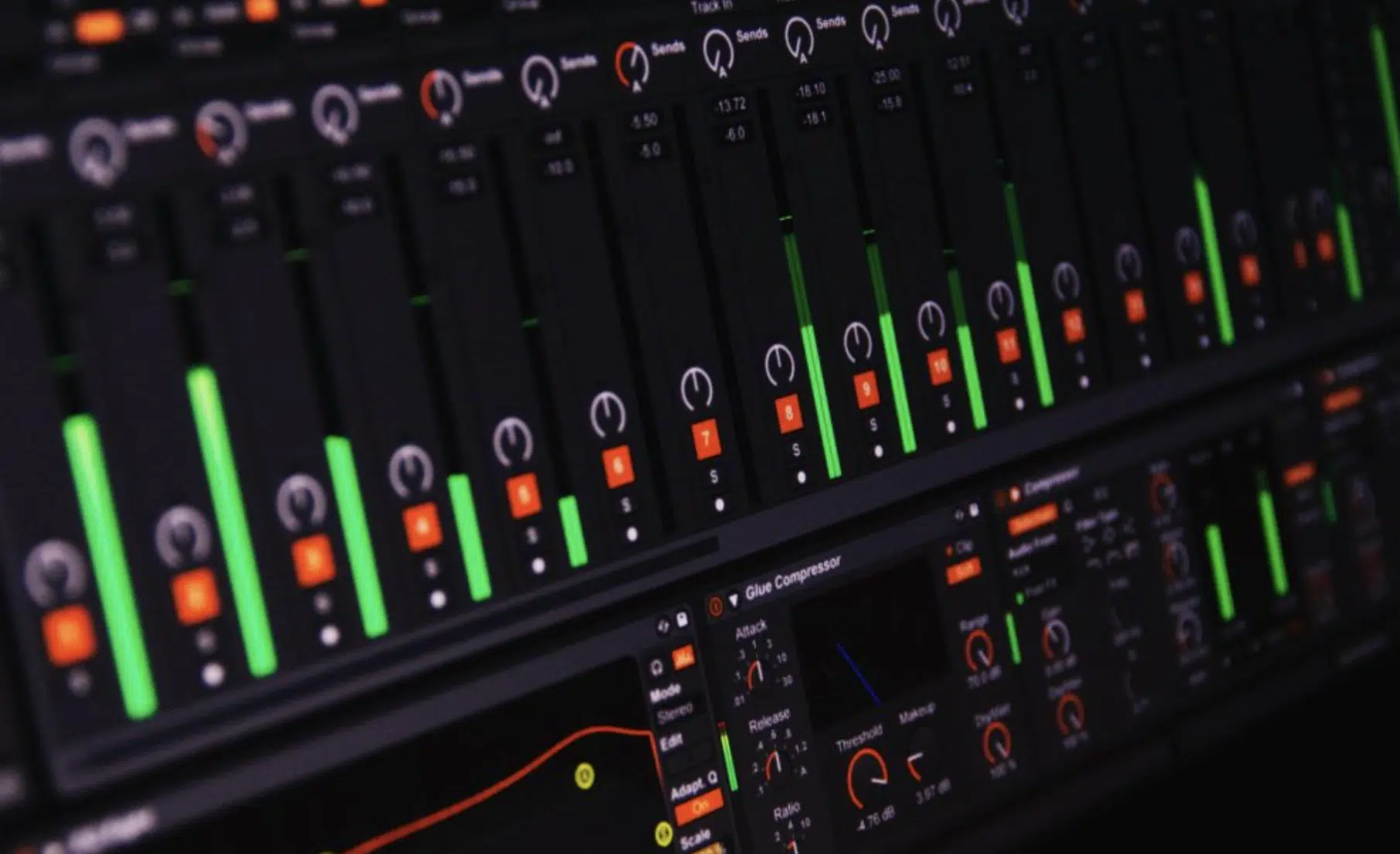
Mixing is where you balance individual tracks, adjust levels, and blend elements to create a cohesive whole.
It’s about finding the right harmony between different instruments and vocals.
To ensure each element sits well in the mix, pay attention to:
Effective use of effects like reverb, delay, and modulation can add depth and character to your mix, which we’ll break down a little later on.
Automation plays a key role in dynamically shaping the sound throughout the track and creating a good mix.
These production tools, when used correctly, can significantly enhance the quality of your mix.
The goal of mixing is to achieve a clear and impactful sound.
Ensure that each element is audible and has its space in the frequency spectrum.
Your final mix should sound good on various playback systems 一 from headphones to large speakers and everything in between.
-
Mastering: The Final Touch
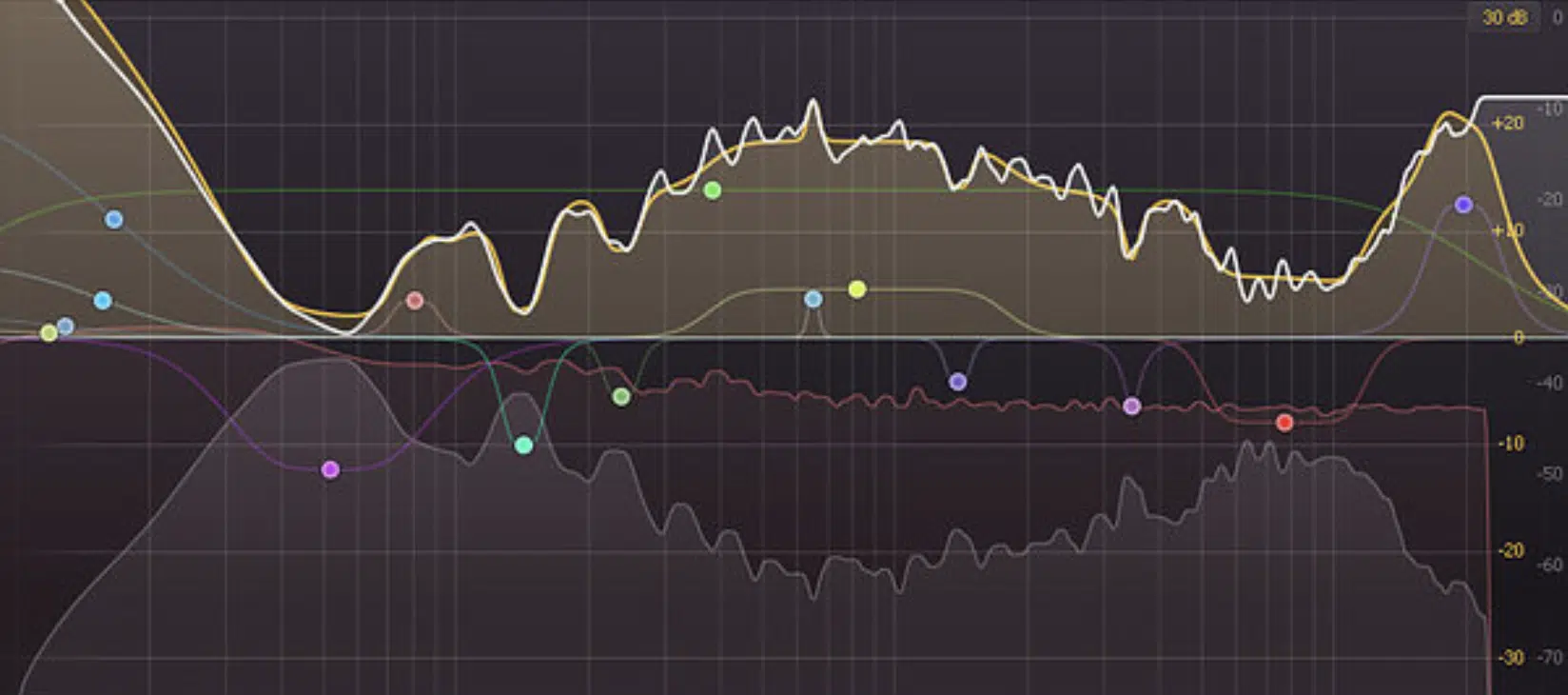
Mastering is the final step in the music production process.
It involves fine-tuning the overall sound, ensuring consistency across the album or EP, and preparing the track for distribution.
It’s about giving the music the polish and loudness it needs to stand out.
During mastering, focus on aspects like overall loudness, stereo width, and ensuring there are no frequency imbalances.
To do so, the following production tools can help:
- Limiters
- Equalizers
- Stereo imaging
A well-mastered track (whether it’s your first track or hundredth) should sound balanced, cohesive, and ready for the listener’s ears.
While most producers choose to master their tracks themselves, outsourcing to a professional mastering engineer can bring a new level of expertise to your music.
NOTE: If you decide to master your tracks yourself as opposed to using a mastering engineer, ensure you have a good understanding of mastering techniques and a well-treated listening environment.
-
Learning from the Pros: Using Reference Tracks
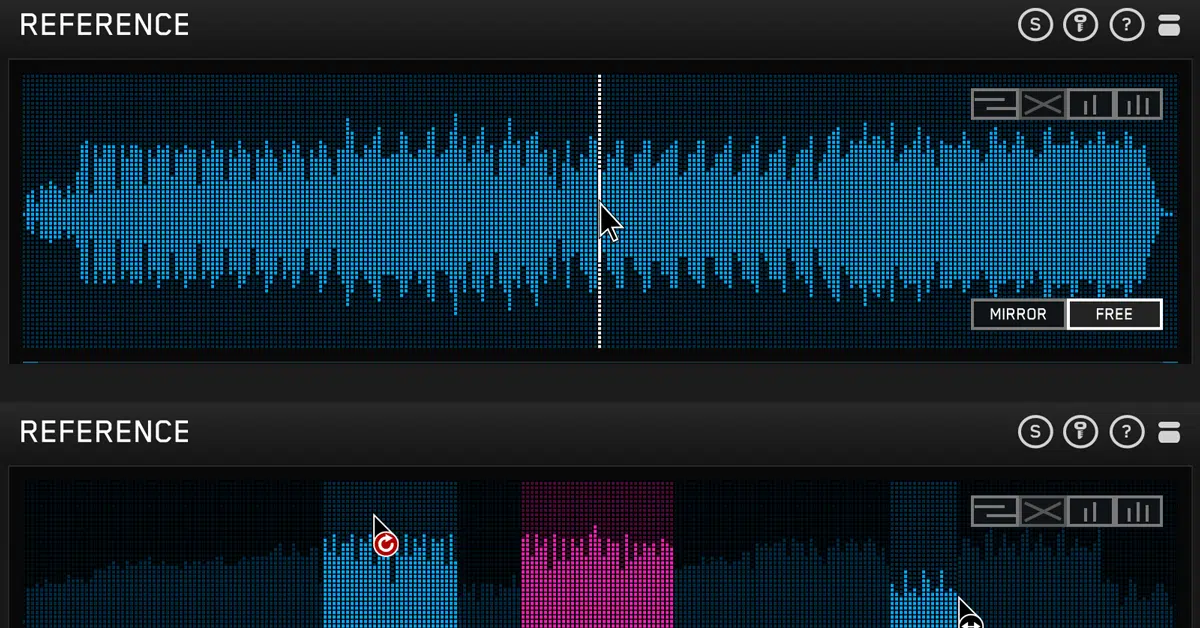
Using reference tracks is a common practice in both mixing and mastering.
By comparing your work to professionally produced and mastered reference tracks, you can gauge where the right mix or master stands in terms of quality and balance.
Select reference tracks that are similar in style and sound to your music (like your favorite songs, perhaps).
Analyze these tracks for elements like:
- Loudness
- Stereo width
- Overall balance
Use them as a guide to make decisions about your own mixing and mastering process.
Remember, in the music production game, it’s all about sounding professional and captivating your audience.
The Art of Sound Design and Audio Engineering
Sound design and audio engineering are critical components of music production, contributing significantly to the final product. So, let’s break it down.
-
Exploring the Realm of Sound Design
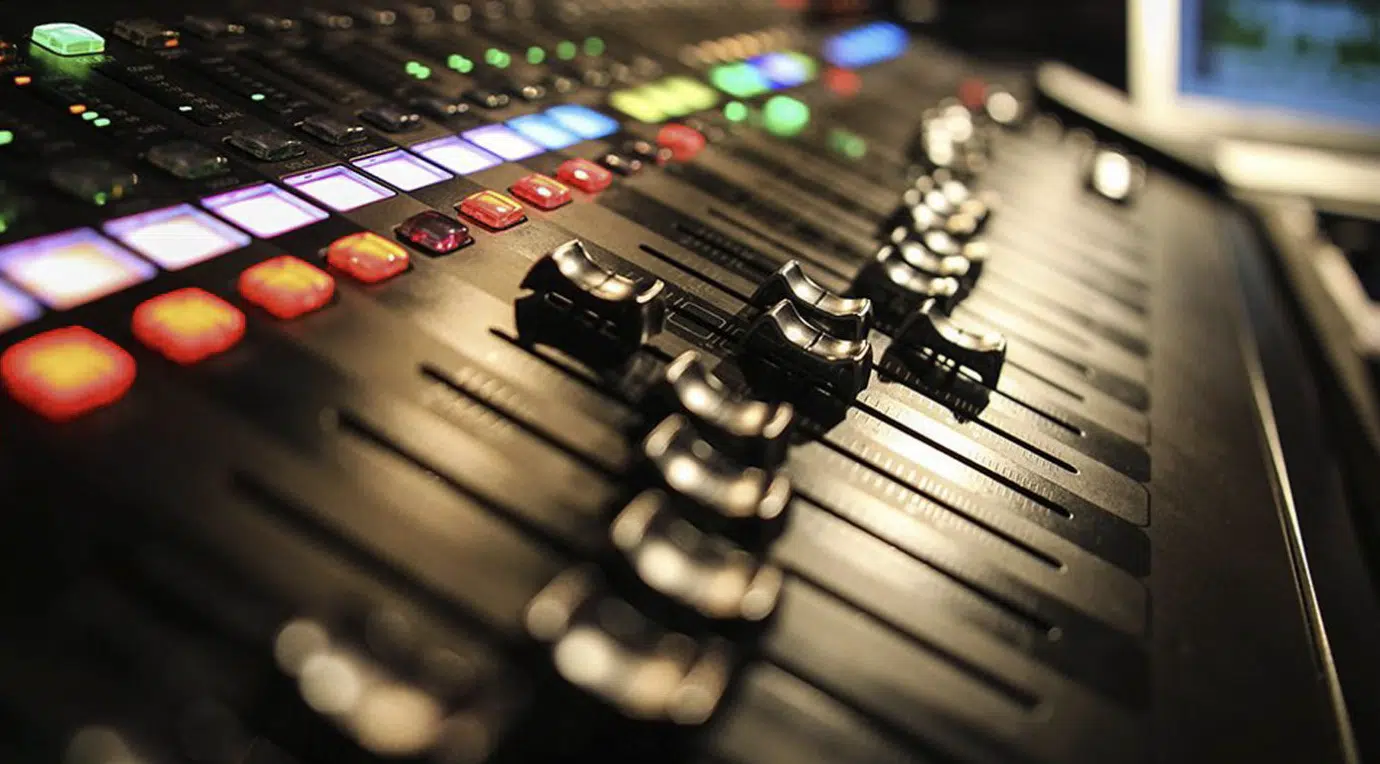
Sound design is about creating and manipulating audio elements to achieve the desired effect.
Sound design can involve synthesizing new sounds, modifying recorded sounds, or even blending different sound sources.
Good sound design can elevate a track 一 giving it a unique identity and feel.
Leverage various tools like:
- Synthesizers
- Samplers
- Audio processing plugins
They will help you become a sound design master in no time.
Experiment with techniques like layering, modulation, and granular synthesis to create rich and complex soundscapes.
Integrating sound design into your music production enhances the overall listening experience.
It allows you to add depth, character, and emotional impact to your tracks.
Whether you’re creating ambient textures or punchy electronic beats, sound design is an invaluable skill for any music producer.
-
The Crucial Role of an Audio Interface
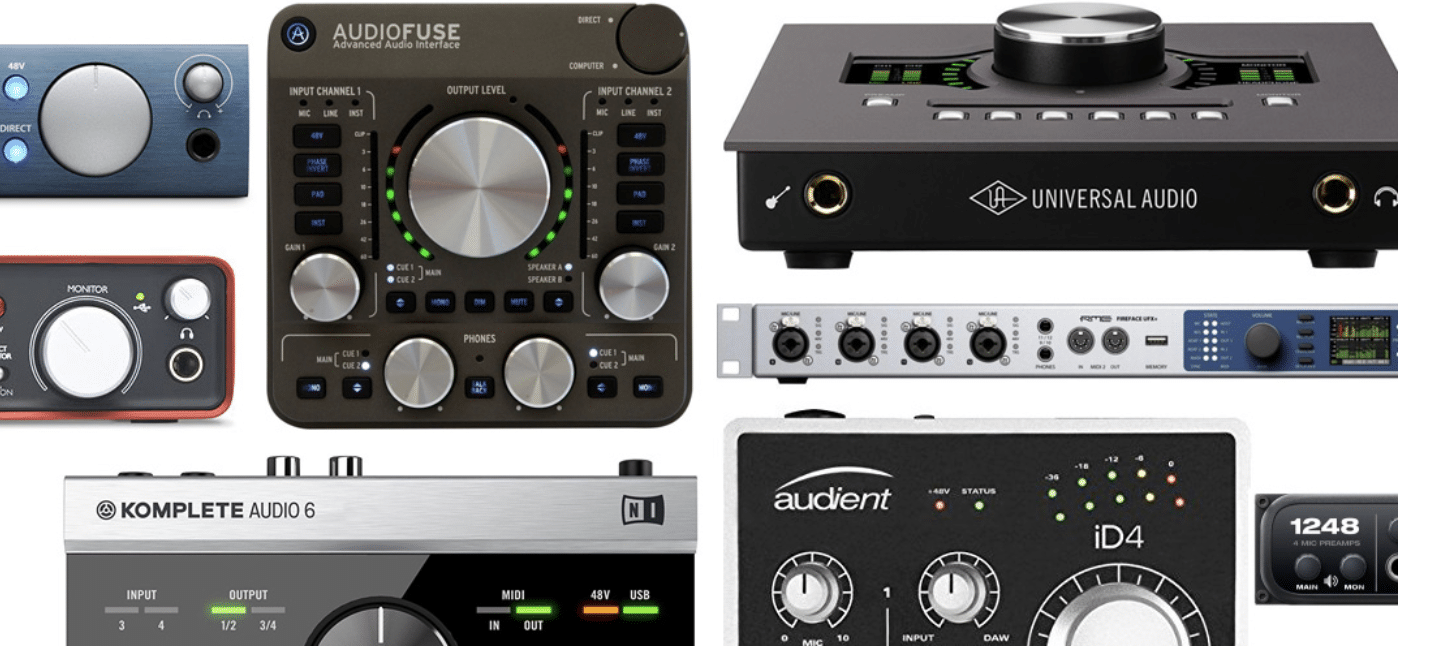
An audio interface is a critical piece of equipment in your home studio, serving as the bridge between your instruments, microphones, and computer.
Make sure to select an audio interface that offers:
- High-quality conversion
- Low-latency performance
- Sufficient inputs and outputs for your needs
Utilize your audio interface to its fullest potential.
This includes managing input levels, monitoring latency, and using onboard DSP (Digital Signal Processing) if available.
A well-configured audio interface ensures that your recordings are clear, free from unwanted noise, and accurately capture the nuances of your performance.
-
Advanced Techniques in Audio Engineering
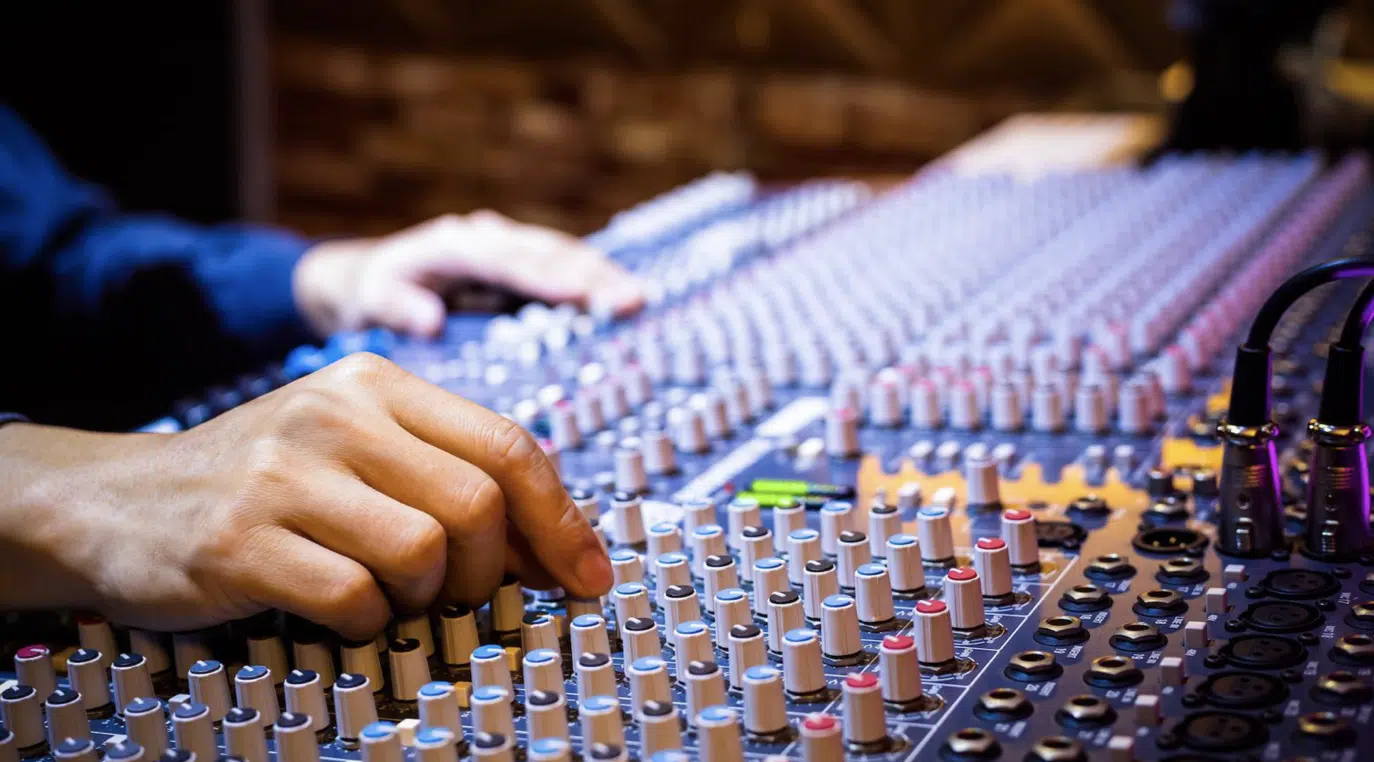
As you grow as a music producer on your music production journey, explore advanced recording techniques.
This could involve complex microphone setups, experimental recording methods, or advanced signal routing in your DAW.
These techniques can add a unique flavor to your recordings and set your music apart.
Post-production involves tasks like:
- Editing
- Pitch correction
- Time alignment
Mastering these skills ensures that your recordings are polished and professional.
Effective editing can enhance the rhythm and flow of the track.
Additionally, careful pitch correction and time alignment can improve the overall performance without losing its natural feel.
The Final Step: Promoting & Distributing Your Music
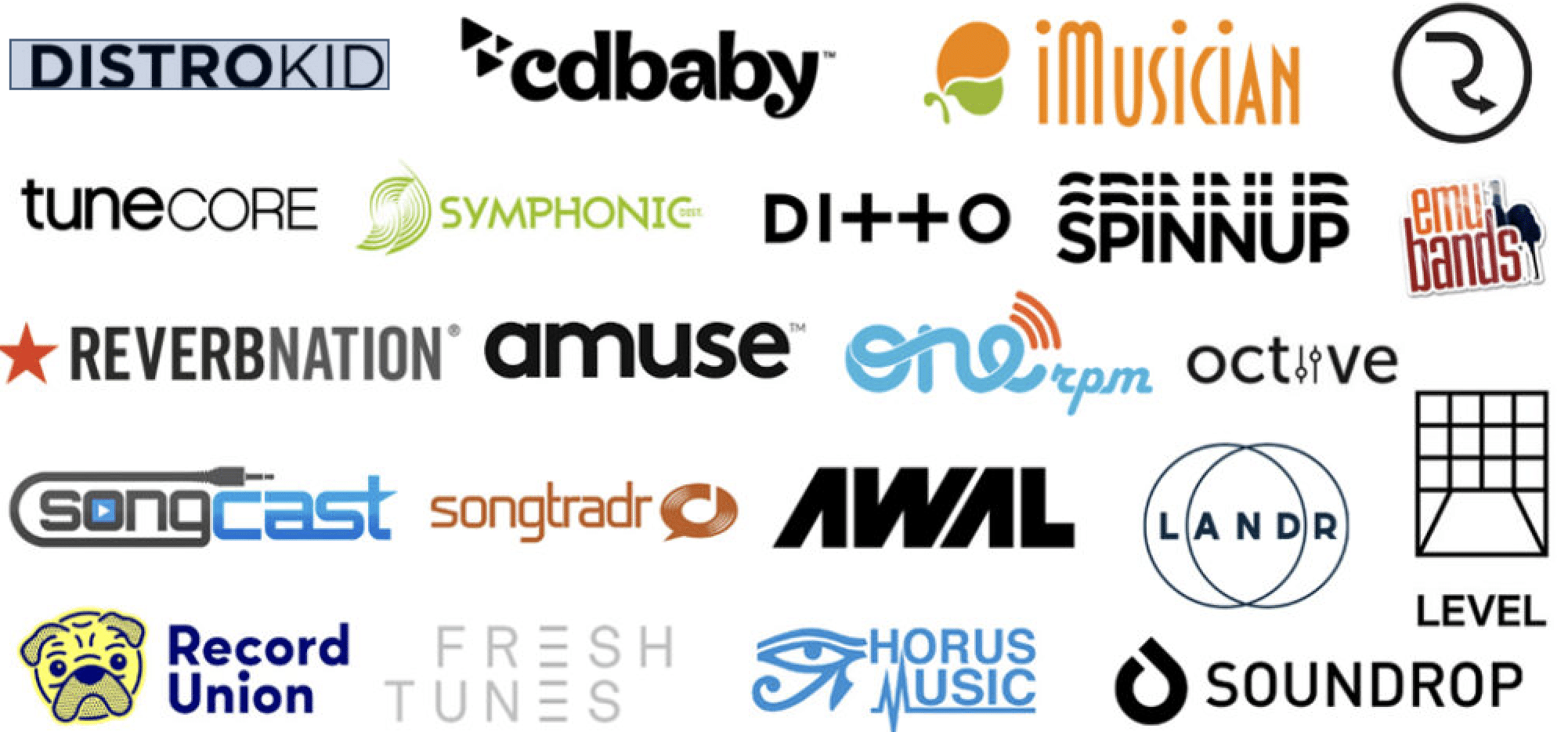
Once your music is produced, mixed, and mastered, the next crucial phase is promoting and distributing it to reach your audience.
In today’s music industry, online platforms are essential for music promotion.
Utilize social media, music streaming services, and YouTube to showcase your music.
Engage with your audience through these channels to build a loyal fanbase.
Develop an online marketing strategy that includes:
- Content creation
- Social media advertising
- Email marketing
Share behind-the-scenes content, stories about your music production process, and updates about new releases to keep your audience engaged.
Remember, you can make the most mind-blowing tracks, but if the world doesn’t discover them, you won’t get very far.
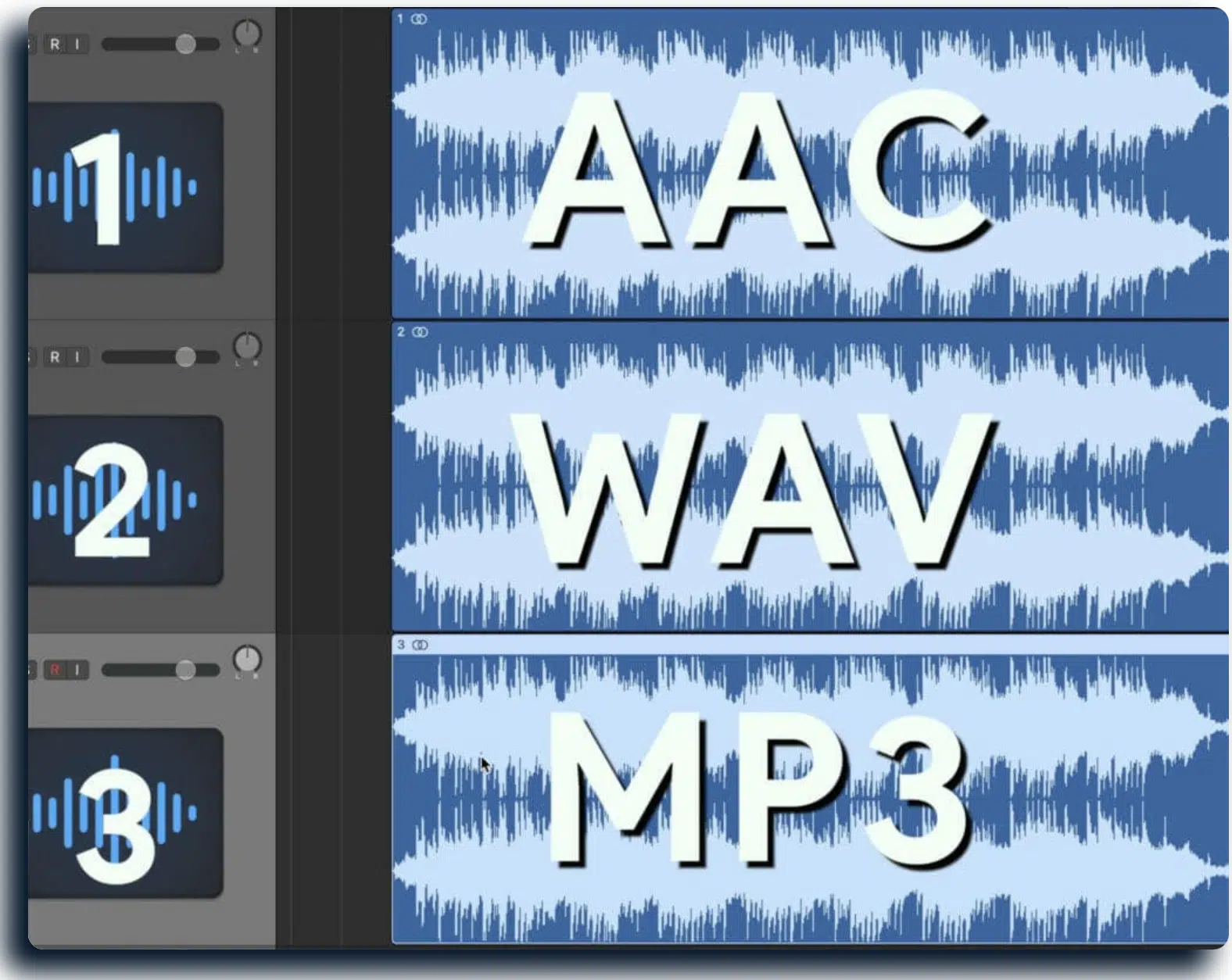
Be knowledgeable about various media formats.
Each format has its advantages and is suitable for different distribution and promotion channels.
These include:
- MP3 一 Compressed, lossy, widely compatible
- WAV 一 Uncompressed, lossless, high quality
- AAC 一 Advanced compression, efficient, better quality than MP3
Ensure your music is available in formats that are widely accepted and provide high-quality listening experiences.
Select the right distribution channels for your music.
This could include digital distribution platforms like Spotify or Apple Music, or physical formats like vinyl or CDs.
Consider your target audience and the most effective way to reach them.
Bonus: Incorporating Audio Effects
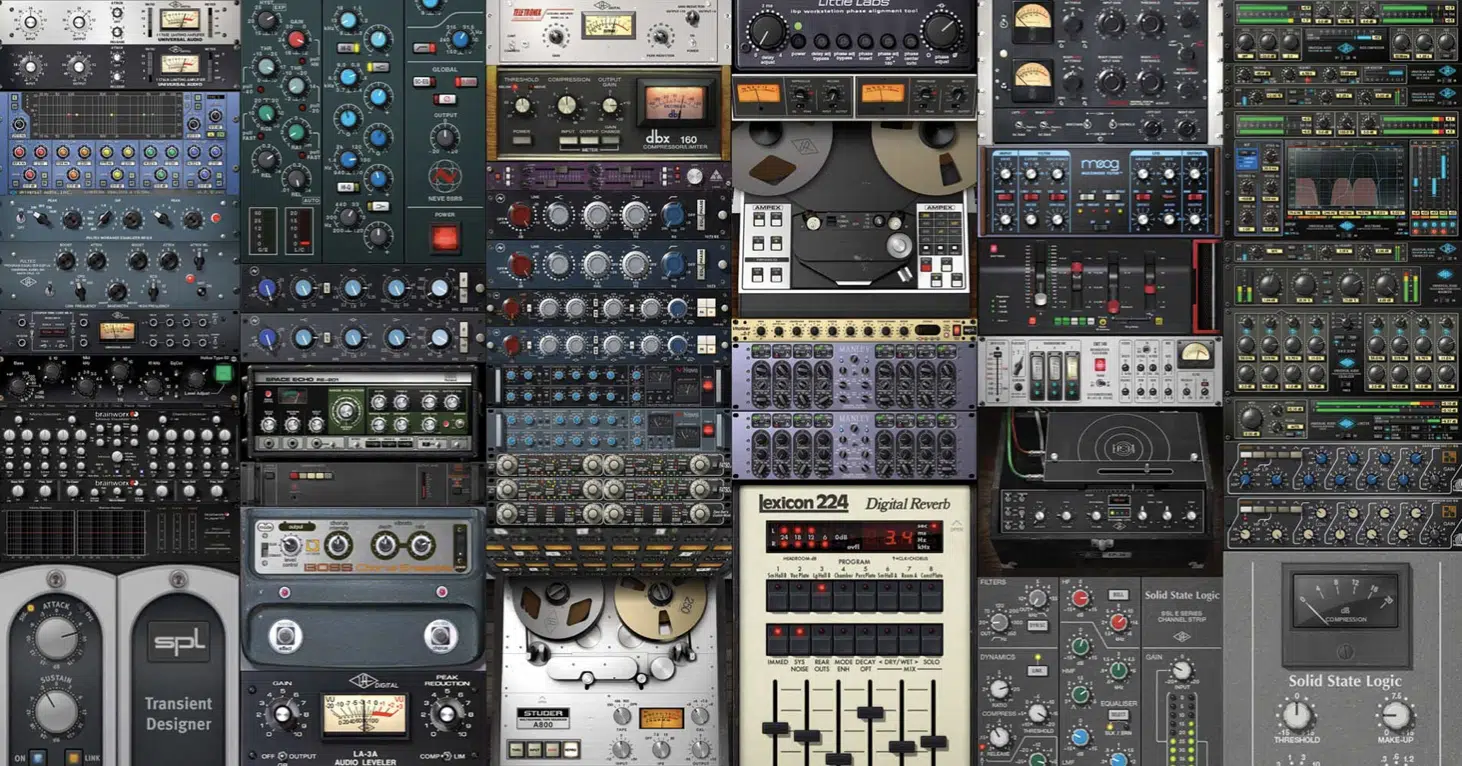
In the world of music production, the use of audio effects is a crucial skill for any music producer.
Whether you just started producing music or have been producing music forever, these effects are pivotal in shaping the overall sound and feel of the music you produce.
A skilled music producer knows how to properly apply effects like:
- Reverb
- Delay
- EQ
- Compression
- Saturation
- Distortion
- Etc.
These tools allow you to add depth, warmth, and clarity.
They help to transform a raw recording into a polished piece of music and make the entire process more intriguing.
The strategic use of these effects can be the difference between an amateur and a professional-sounding track.
Whether it’s creating a spacious soundscape or ensuring every element (like drums) sits perfectly in the mix, mastering audio effects is a key aspect of learning to produce music.
Many producers think it’s just about knowing what each effect does, but it’s also about understanding when and how to use them.
This knowledge comes from both study and experience of writing songs.
As you produce music more frequently, you’ll develop a sense of which effects to apply to bring out the best in your tracks.
This is part of the creative process, where technical aspects meet artistic intuition.
The right application of audio effects can elevate a song 一 making it not only more pleasing to the ear but also more emotionally resonant.
Plus, it will make you sound like a more experienced producer, which instantly captures people’s attention.
Music Production: Final Thoughts
Music production, as you now know, is a multifaceted and deeply rewarding process.
Mastering each intricate part, from composition to mastering, can help you bring your musical visions to life and create sounds that resonate with your audience.
By understanding the nuances of producing music, you can craft compositions that not only reflect your artistic identity but also connect with listeners like a true professional.
This way, your music can reach new heights, leaving a lasting impact on the industry and your listeners.
To further support your journey into music production, I’d like to introduce the legendary Beatmaker Blueprint (Free Teaser Pack).
This incredible resource includes 449 Free Samples, Loops & MIDIs 一 offering an extensive range of sounds and rhythms to explore and incorporate into your projects.
These samples, loops & MIDIs are modeled off the biggest hit songs in beatmaking genres.
They provide you with the tools to produce music that’s not only current but also groundbreaking.
Whether you’re crafting hip-hop beats, electronic grooves, or any other genre, these high-quality resources are designed to elevate your tracks and inspire your creative process.
With the Beatmaker Blueprint at your disposal, you’re well-equipped to take your beats to a whole new level, producing music that stands out in today’s dynamic music landscape.
Remember, every great track starts with a solid foundation, and these samples are the perfect building blocks to kickstart your next hit.
Until next time…







Leave a Reply
You must belogged in to post a comment.